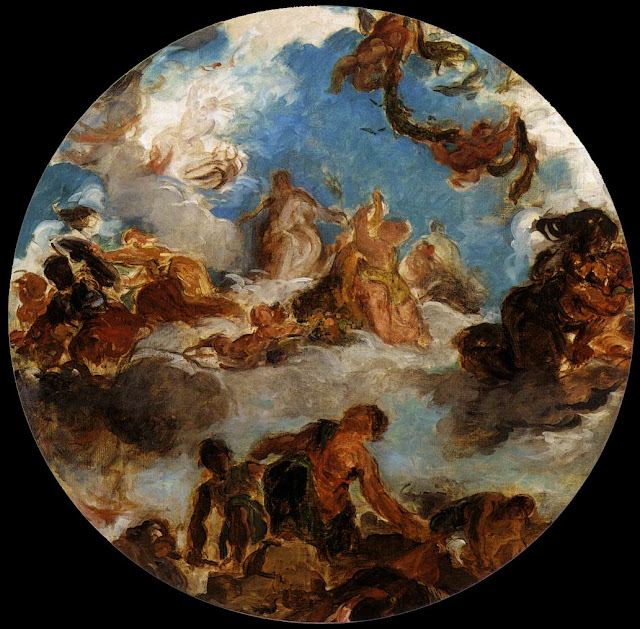 |
| circle of Jacquio Ponce Reclining Allegorical Figures of Magnificence and Magnanimity ca. 1575 bronze Los Angeles County Museum of Art |
"The unconscious is an interference apparatus that produces slips of the tongue, mistakes, sudden failures of recall, and so on. As we've seen, in analysis all these mistakes can supposedly be interpreted, as having unconscious intentions, so they are not really mistakes at all. Nevertheless, Freud's vision of the mind stressed its internal division and opacity."
 |
| Anonymous Italian sculptor Figure of Portia ca. 1680 bronze Los Angeles County Museum of Art |
 |
| Antoine Etex Death of Hyacinthus ca. 1829 bronze Los Angeles County Museum of Art |
"Lacan, following Freud, located that internal split in the subject's relation to language: language precedes the self and exceeds its control, so language is also a major interference apparatus. This insight has led literary theorists, including Barthes, Paul de Man, Jacques Derrida and Michel Foucault to think of the literary text in the same way, that is, as exceeding its author's control."
 |
| Frederic Leighton The Sluggard ca. 1890 bronze Los Angeles County Museum of Art |
 |
| Francisque-Joseph Duret Dancing Neapolitan boy ca. 1838 bronze Los Angeles County Museum of Art |
"We are perhaps nearing an understanding of the meaning of chance in art. It would, of course, be unbearable if our intentions were regularly frustrated. Yet there is something terribly arid, not to say mechanistic, in the idea of a world where all our purposes result in predictable consequences, where we are completely transparent to ourselves and where intentions always result in expected actions."
– quoted passages are from Margaret Iverson's essay The Aesthetics of Chance, published by Whitechapel Gallery in 2010
 |
| Giacomo Zoffoli copy of the Apollo Belvedere late 18th century bronze Los Angeles County Museum of Art |
 |
| Anonymous Florentine sculptor Risen Christ ca. 1620 bronze Los Angeles County Museum of Art |
 |
| Giovanni Battista Foggini Time Ravishing Beauty ca. 1700-1725 bronze Los Angeles County Museum of Art |
 |
| Anonymous Egyptian sculptor Figurine of the God Bes 25th Dynasty, 711-657 BC bronze Los Angeles County Museum of Art |
 |
| Antoine-Louis Barye Theseus and the Minotaur ca. 1860 bronze Los Angeles County Museum of Art |
 |
| Guillaume Boichot Seated Hercules ca. 1795 bronze Los Angeles County Museum of Art (gift of William Randolph Hearst) |
 |
| Auguste Rodin Female Centaur ca. 1887-89 bronze Los Angeles County Museum of Art |
 |
| Auguste Rodin Female Centaur ca. 1887-89 bronze Los Angeles County Museum of Art |
 |
| Auguste Rodin The Shade ca. 1880 bronze Los Angeles County Museum of Art |
I am grateful to the Los Angeles County Museum of Art for making photographs of the sculpture collection available.









































